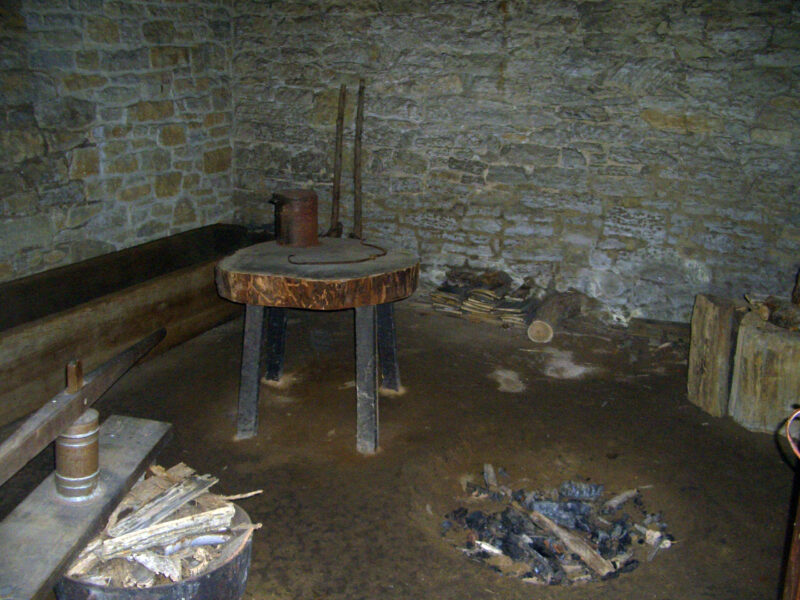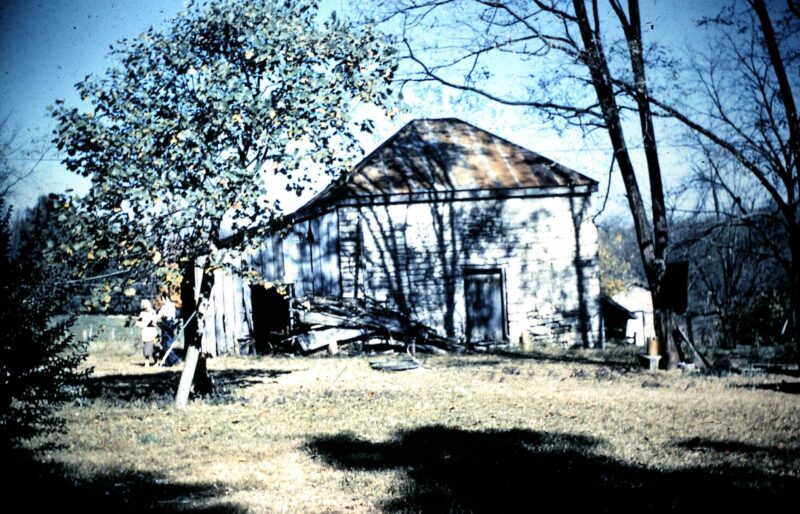Smoke House
The last building in the kitchen complex is the smokehouse. The smokehouse was used to cure and preserve poultry, beef, pork, venison, and mutton. While meat could be cooked and eaten the same day it was killed, the smokehouse could ensure that the family would be able to eat meat throughout the year. Meat, especially pork, was a staple of a southern farm diet. Pork was often included in the allotments of food provided to enslaved workers by landowners. Animals, particularly hogs, were slaughtered in late fall and early winter, as the cool weather would assist in the preservation of the meats.
Meats were brought directly from slaughter while the meat was still warm and placed in the brining trough seen at the left of the room, where it was then covered with a mixture of salt, sugar, and saltpeter. Salt helps dry the meat; sugar adds and protects flavor. Saltpeter, also called potassium nitrate, helps the meat retain its natural pinkish color and is still used as a preservative. The sides of meat would remain in the trough for about six weeks, or throughout the winter, to give the salt enough time to draw water out of the meat. After soaking, it was thoroughly washed, smeared with a coating of brown sugar, and then hung on hooks from the rafters. A wood fire was built in a pit on the dirt floor, and it burned continuously throughout the smoking process. The type of wood used affected the flavor of the meat, and hickory, apple, and maple were popular for smoking meats. The smoking time could range anywhere from a few days to almost six weeks. Most meats properly processed would remain edible for 2-4 years and would be stored in the smokehouse until consumed.

The Croghans raised hogs for both their own consumption and for sale. In 1849, Dr. John Croghan owned 26 pigs. Smoking meat was dirty, smelly work, and it was often separated from the work of the other outbuildings. The door to our smokehouse faces away from the kitchen door and the door of the dairy, as the smoke would interfere with processing of the milk in the dairy and the daily activity of the kitchen.
This outbuilding was never demolished and served as the basis for the reconstruction of the rest of the entire kitchen complex during the summer of 1965.

